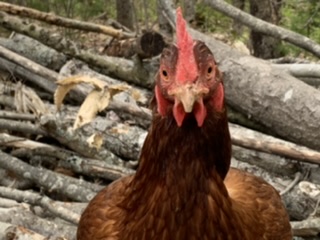Processing Wool for Needle Felting
From sheering to dying to needle felting and everything in between!
Wool dyed and dried.
After dying, this rack is where we lay out the damp newly colored wool. It has been very helpful to dry a few batches at a time. It dries better up on the rack then on the table.
We are loving playing with the colors. The art store had some RIT dyes and after literally sitting in the aisle for twenty minutes, I chose black, brown, tan and the primary colors. This sample is from our first attempts. I was hoping for a real red color on the front left batch, but ended up with magenta. I will have to try again.
I was very pleased with the blue, yellow and greens that we created with the food coloring dye left over after dying Easter eggs.
This clump of brown wool shows bits of hay and other “vegetable matter”. Carding will help get the rest of this out of the wool.
This process is a little more tedious, especially when there is bits of the vegetable matter to pick out, but I have successfully convinced the kids that they should take a turn. Amelia even asks for a turn: she finds it therapeutic.
The process is pretty straightforward. A handful of wool is brushed from the left brush onto the right brush.
The wool gets softer, fluffier, and cleaner as it is brushed out.
We roll the wool over itself and move it back to the first brush and repeat the process twice more.
We pick out debris that migrates to the surface as we work. When it is ready, we have a nice roving ready for needle felting. I don’t know about you, but my anticipation grows at this point. Each new color that is ready, means a new project that can be made.
So here is the fun part… needle felting!
People will often gaze inquisitively as I work with my needle felting because it is so different than other types of needle work. The needle felting needle is barbed to hook the tiny fibers of wool to each other as I stab it repeatedly, turning and shaping the piece as I go. The more it is stabbed, the tighter and firmer the wool piece feels.
See here the legs, face and ears are nice and firm, while the fluffy wool body and top of the head is attached more loosely to give it volume and appearance of wool on this sheep.
Here are my first few projects when I had only the natural color of wool to work with as I hadn’t done any dyeing yet. I was practicing with creating the different shapes and attaching the ears, legs, and tails etc.
After getting some colors done, here is the final result of this bunny and kitty.
We purchased some little black beads that didn’t work well for 3D projects like these.
From my little bit of experimentation with the eyes now, I like felting the eye on the critter as either simple black dots or more detailed as in this moose.
I was a little apprehensive about letting the younger kids needle felt because of the very sharp needle. They were very persistent at their requests and then I read how some people used cookie cutters for their needle felted projects and we were all happy with this option. They were able to make animals and shapes they wanted and it was safe. Amelia made the bunny and a fox. Avalea made the moose, bear, and the same type of fox!









































